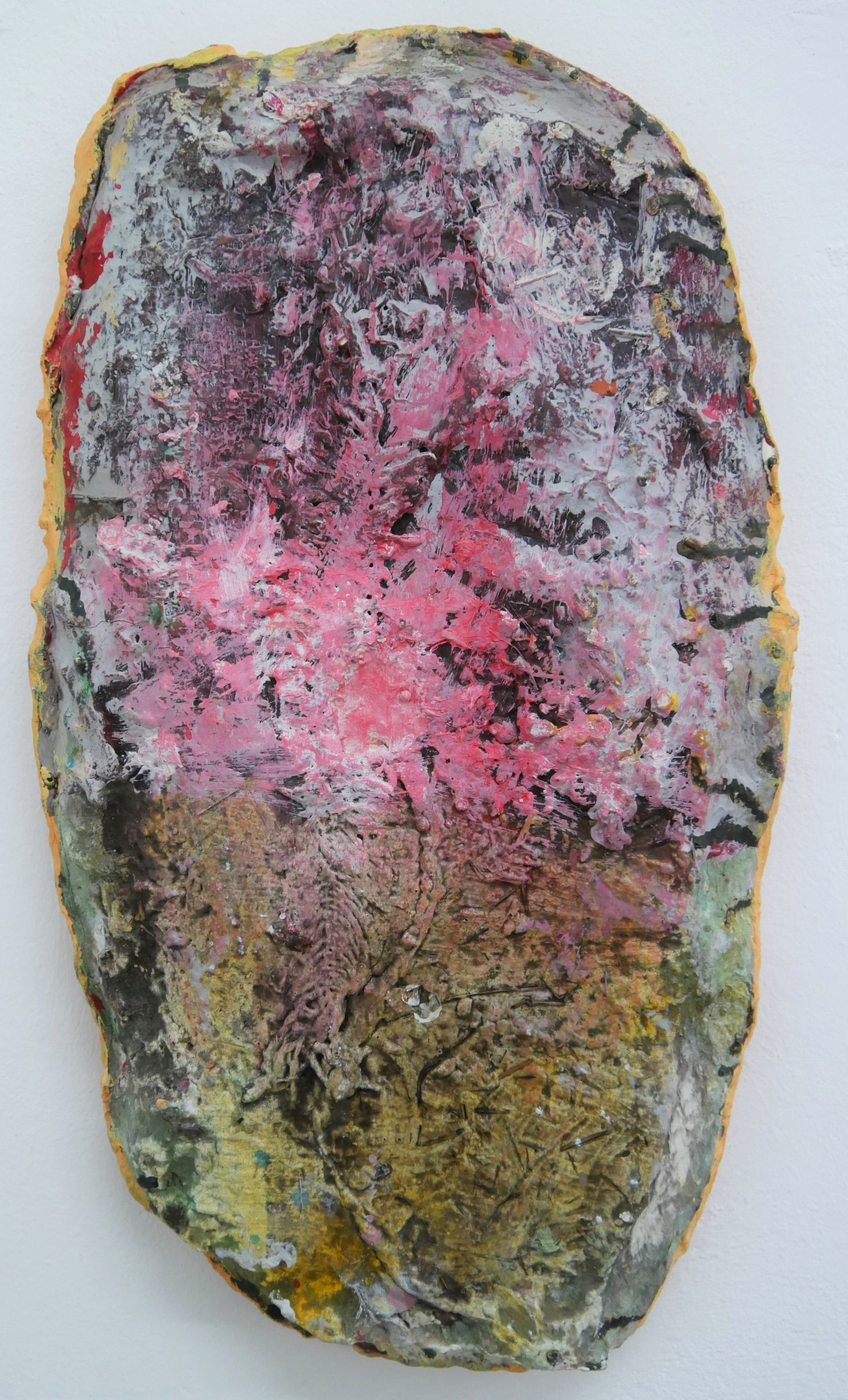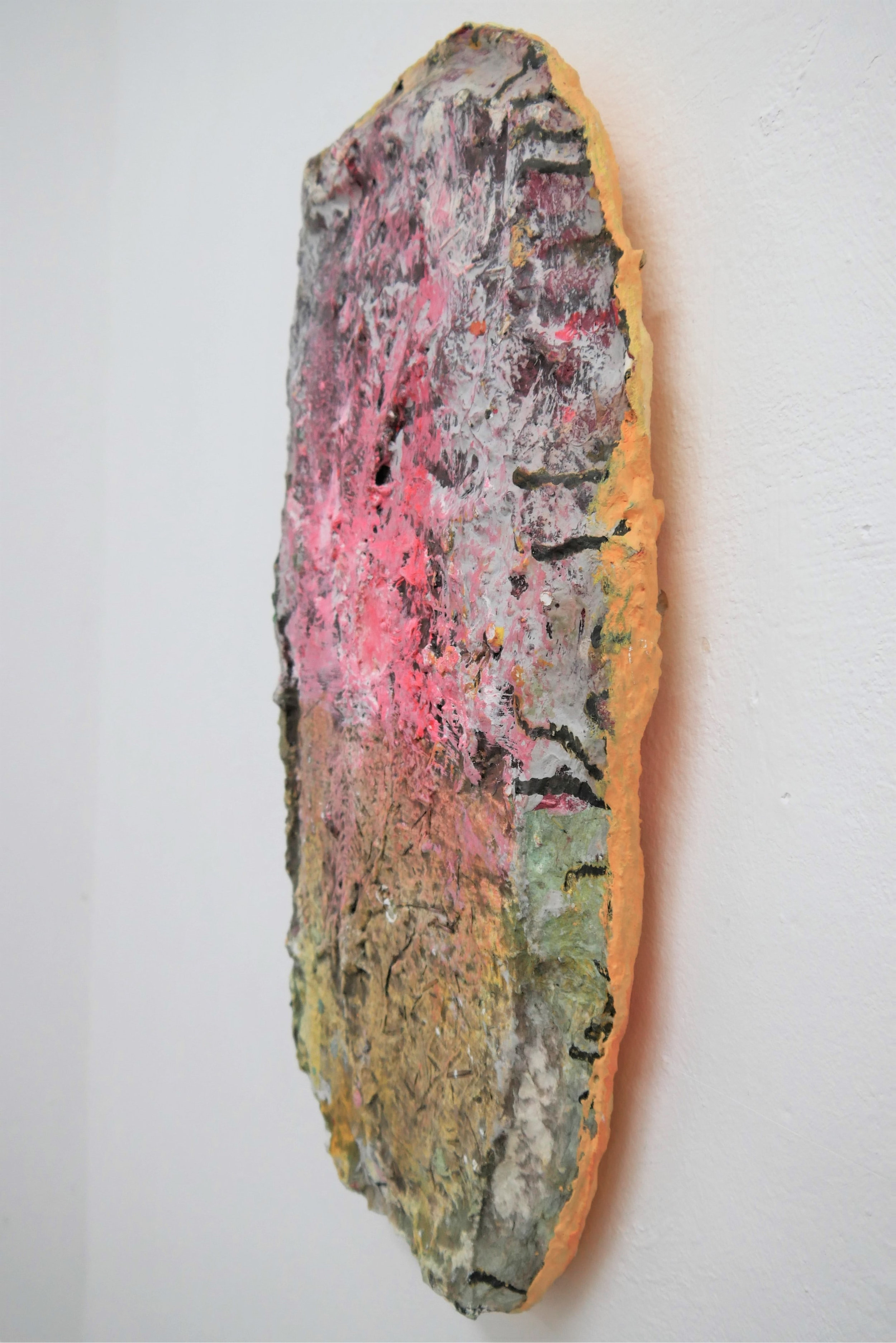The Space in Between
The Space in Between is an exhibition featuring works by four artists in residence at Residency Unlimited (RU), Colleen Merrill, Alex Nowak, Anthony Ragucci, and Emanuel Rossetti. The curatorial project was developed during my two month residency at RU, between May and June 2019.




The Space In Between brings together works guided by reflections on notions of spatial perception and memory, proposing ways to (re)discover the spaces we inhabit. From the body to the territory, works by Colleen Merrill, Alex Nowak, Anthony Ragucci, and Emanuel Rossetti–participants of Residency Unlimited’s artist residency program–engage with spaces in their physical as well as their social and cultural aspects. These works also establish a dialogue with the process and history related to each artist’s practice addressing issues such as representation and visibility.






Colleen Merrill transforms domestic textiles into sculptures and installations that deal with notions of intimacy, domesticity, and memory. The selection of the quilt as her primary material makes reference to its relationship both to the body and the house as well as to its communal making by women. In the works displayed in the exhibition, the artist continues her inquiry about forms that relate to the constant changes in a woman’s body and the perception of gendered roles in different social domains, examining the emotional effects of tensions and dominance in relationships. Pecking Order (2019) and Ejection (2019) are works that evoke ideas of ties as well as of independence. The elements that compose the works have distinguished shapes, positions, and cloth patterns, and they are interconnected by ropes, which are significant pieces as they not only link but also create visible tensions between the parts. In Pecking Order, the rope also forms something that resemble a red target, taking the body to the center of the work and making reference to themes such as reproductive rights and control over one’s own body. The red colour is also used in details that attach and mend pieces while embellishing both works. By reusing these textiles and stitching different parts together, the artist inserts a contemporary perspective in a historical and traditional making process and makes us wonder about co-existences and the ways we relate to ourselves and each other.
Alex Nowak proposes connections between the built environment and nature in artworks with rough textures inspired by natural forms. Architecture and nature are associated suggesting ambiguous and even disrupting relationships between organic and man-made elements. These combinations reflect on the social implications of these relationships and the dominance of natural elements and landscapes. Untitled (2018) is a wall object that explores archeological aesthetics and addresses the control and reproduction of nature. The work resembles a stone imprint extracted from a preserved space like a natural engraving in which sediments such as leaves and the skeleton of small living things were deposited over time. This apparent natural aspect is however confronted with luminous colours, especially pink and orange, and some of the materials used by Nowak such as styrofoam and papier-mâché.
The works of Anthony Ragucci examines the ways we relate to the places we inhabit and different forms of map-making. Questioning the apparent objectivity of the design of maps, the artist proposes a subjective perspective intersecting notions of belonging, memory, and territorial representation. The video and paintings presented in the show are also guided by questions such as: How does memory transfigure one’s perception of a place? How notions of domesticity alter these experiences? The video installation Entertainment for those who long to travel the world (2019) brings together the artist’s interest in historical maps and reflections on their influence in our spatial understanding of the world. Departing from a modular structure to which layers of paint are superimposed and mixed with drawings, the artist creates an animated new space, which goes beyond the flat and linear representation of territorial boundaries. The work also calls attention to the making process as we follow the transformation of this blank space into a vivid environment associating map making practices and topographic views. This new space is informed by the ways Ragucci has established connections with the places he has inhabited, proposing a reconciliation between represented spaces with lived experiences. In the series Flaneurin Brooklyn (2019), the artist creates paintings inspired by a series of walks in Brooklyn–where the artist stayed during his residency at Residency Unlimited. As part of his research on map making, this series transforms the streets into the spaces of investigations and reflects on modes of navigating cities. After living abroad for 12 years, walking became a relevant way to explore spaces and activate feelings of belonging–in this case in Brooklyn. Exploring wandering as a practice of discovery and involvement with new environments, the artist has collected scenes, views, and signs of the city, which are evoked in the collages of painted papers of multiple forms and colours.
The works of Emanuel Rossetti deal with notions of image-making, visibility, and perception. In his recent photographic work, the artist has explored the physical qualities of spaces to reflect on their context and urban transformations. Examining concepts related to the history of photography and the role of the medium in shaping our vision, these works challenge notions of spatial perception and reality. Staged Stair 3 (2019) explores the expansion and continuity of what’s on view and addresses the idea of a “natural vision” in image-making. Started in 2018, this series of images focuses on staircases as an element of transition between the private and the public sphere. Created with a camera that composes a 360° view (it combines two fish-eye lenses with algorithmic mapping), this eerie image–a sort of doubled peephole or a vision in a loop–leads to questions about the fictions of realism and the influence of visual devices in the elaboration of visibility. The image’s continuing character also impels the observer to reconstruct the space of the image in a mental condition, calling attention to the practice of observation and the status of the observer.







